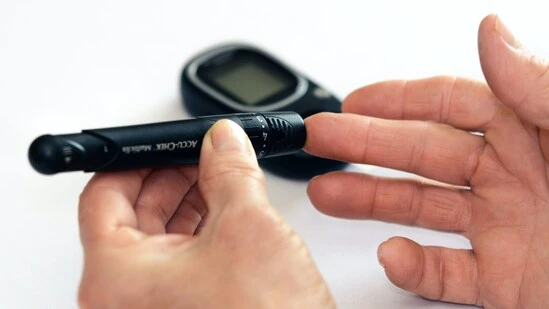Several celebrities have publicly discussed their experiences with pre-diabetes. From Hollywood actor Viola Davis, who was diagnosed with pre-diabetes and has become an advocate for diabetes education and awareness, to veteran actor Tom Hanks.
The Oscar-winning actor was diagnosed with type 2 diabetes, and had revealed that his blood sugar levels were elevated in his 30s, indicating pre-diabetes.
Pre-diabetes in younger individuals
These celebrities’ stories highlight the importance of awareness, education, and lifestyle changes in managing pre-diabetes. In an interview with HT Lifestyle, Dr Suchismitha Rajamanya, lead consultant and HOD, internal medicine, Aster Whitefield Hospital, Bengaluru, highlighted how pre-diabetes in younger Indians is an increasingly concerning issue.
She said, “Pre-diabetes, a state where blood sugar levels are higher than normal without yet being classified as type 2 diabetes, is an increasingly common diagnosis in younger people in their 20s and 30s in India. As we are seeing, pre-diabetes is on the rise due to sedentary lifestyles, irregular eating habits, stress levels and poor sleep patterns – all behaviours young people subscribe to in urban areas today.”
She added, “Prediabetes isn’t a diagnosis it’s a warning signal. If you make the right changes keep a healthy diet, exercise regularly, manage stress, and get the HbA1c test every year you may be able to completely reverse the risk factor. The trick is early detection. With increasing rates of type 2 diabetes in India, particularly in younger adults, pre-diabetes screening is not an option anymore; it is a necessity.”
What is pre-diabetes and why is it dangerous?
According to Dr Rajamanya, pre-diabetes is difficult to detect due to the absence of recognised symptoms. “You may feel perfectly well and full of energy, but your body’s management of blood levels may already be affecting your health. If no action is taken, a typical person will develop diabetes within 5-10 years and in some circumstances, less. The recent Indian Council of Medical Research (ICMR)-INDIAB study found that 15.3 percent of Indians have pre-diabetes many of which are unaware. Most concerning is that this is increasingly affecting the younger generation.”
Why you should care about the HbA1c test
Dr Rajamanya said an HbA1c (glycated hemoglobin) test is a very simple blood test. “It provides you with an alternative way of computing your average blood sugars from the last 2 to 3 months. Although a fasting sugar test would have only assessed your blood sugar at that moment, an HbA1c gives you a better snapshot of your blood sugars over a lengthier period of time. It is a great way to investigate your blood sugar levels before you enter the pre-diabetic stage when you might have the option to make lifestyle changes that could potentially reverse your diagnosis completely,” she explained.
Per the American Diabetes Association, Dr Rajamanya shared HbA1c results are used to determine:
⦿ Under 5.7 percent – normal
⦿ 5.7 percent to 6.4 percent – pre-diabetes
⦿ 6.5 percent and over – diabetes
“If you are a younger person having a family history of diabetes, or high BMI, or PCOS for women, or any metabolic disease history or problems, it is good practice to have an annual HbA1c test as a preventative measure,” she added.
Why are young Indians at risk?
According to Dr Rajamanya, these factors play a role:
1. Carbohydrate-heavy diet + long sitting breaks: Most of the Indian diet of refined carbohydrates and sugars can result in some younger adults who have long desk hours with hardly any movement.
2. Stress metabolic effects + sleep deprivation: Chronic stress and irregular sleep have metabolic effects, causing hormonal imbalance in the body, which can negatively impact insulin sensitivity.
3. Failure to have health appointments: Many individuals under the age of 35 are not routinely screened unless symptoms appear- and by that time the damage potentially has commenced.
Signs you should not ignore
While there are no definitive symptoms of pre-diabetes, as per Dr Rajamanya, common signs include the following, and it is advisable to visit your physician and get tested for these signs:
⦿ Unexplained fatigue
⦿ Excessively thirsty or urinating excessively
⦿ Unexplained changes in weight
⦿ Dark patches of skin on the neck or armpits- acanthosis nigricans
⦿ Recurrent infections or wounds that take longer to heal
